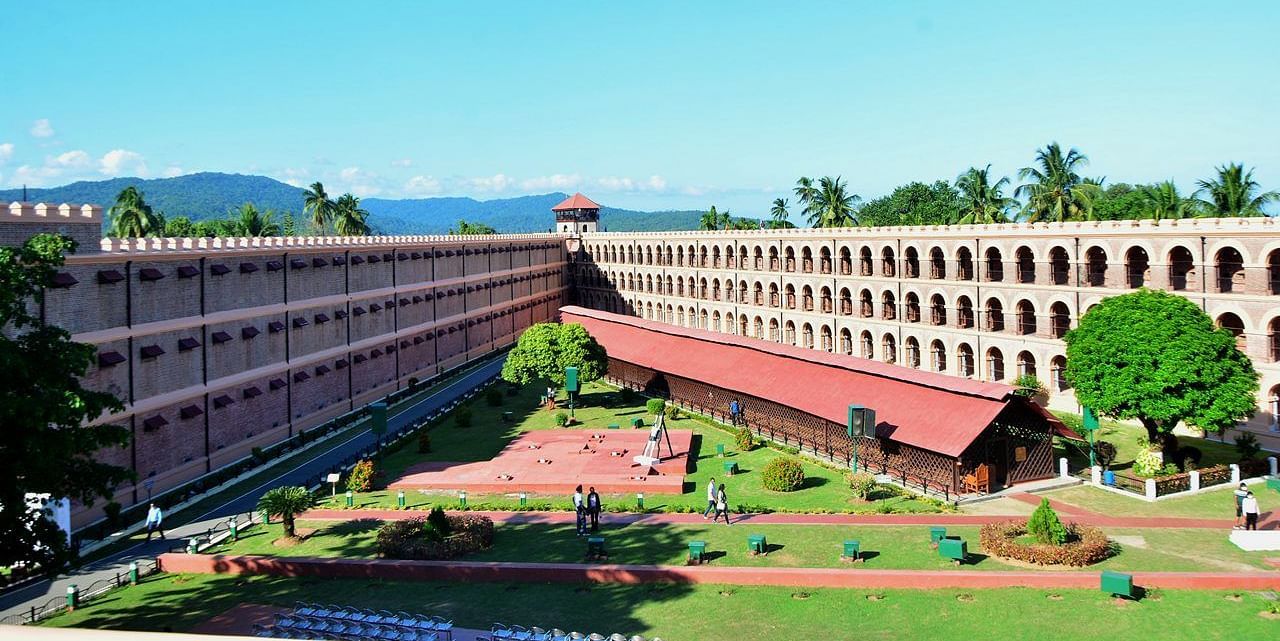Home > Island Insights > Cellular Jail National Memorial: A Deep Dive into History
- Unveiling the Andaman Islands
- The Lost Languages and Enduring Traditions of the Andaman Islands
- Cellular Jail National Memorial: A Deep Dive into History
- Nightlife in Andaman
- The Flora of the Andaman Islands: A Rich Tapestry of Life
- Port Blair Connectivity: Gateway to Your Andaman Adventure
- Monsoon in Andaman: A Different Kind of Paradise
- Exploring Ross Island
- Birdwatching in the Andamans
- Radhanagar Beach: A Jewel of Eco-Friendly Tourism in the Andaman Islands
- Andaman Adventures: DIY Travel vs. Guided Tours – What’s Your Style?
- Is Andaman Safe for Tourists?
- 10 Mistakes to Avoid on Your Andaman Trip
- Essential Packing Tips for Your Andaman Adventure
- Sports Fishing in the Andaman Islands
- Top 5 Tips for Planning a Budget-Friendly Trip to the Andaman Islands
- Andaman Islands: Fun Facts and Tips for a Great Trip
- Top 5 Responsible Travel Tips for Visiting the Andaman Islands
- Top 10 Must-visit Places in the Andaman Islands
- Best Time to Visit Andaman Islands
- Explore the Culture and Cuisine of the Andaman Islands
- Top 5 Adventure Activities to Try in the Andaman Islands
- Natural Wonders to Explore in the Andaman Islands
- Exotic Wildlife In Havelock Island
- Andaman Snorkelling and Diving Sites
- Must-visit Beaches in Andaman

Cellular Jail National Memorial: A Deep Dive into History
The Cellular Jail, also known as Kala Pani, is a haunting reminder of India's struggle for independence. Located in Port Blair, Andaman and Nicobar Islands, this colonial-era prison symbolizes the resilience and sacrifices of freedom fighters who endured unimaginable hardships for the nation’s liberation.
Historical Context
Origins and Construction
The British began using the Andaman Islands as a penal settlement after the Sepoy Mutiny of 1857. Thousands of rebels were exiled to this remote location, marking the beginning of its grim association with punishment and isolation. The need for a high-security prison grew as the independence movement intensified in the late 19th century. Construction of the Cellular Jail commenced in 1896 and was completed in 1906. Designed with seven wings in a star-shaped pattern, its architecture ensured solitary confinement to suppress communication among inmates.
Purpose and Atrocities
The jail was intended to isolate political prisoners from mainland India and each other, effectively silencing dissent against British rule. Inmates faced brutal conditions, including forced labour, starvation diets, physical torture, and solitary confinement. The term Kala Pani (black water) reflected not only its geographical isolation but also the horrors endured within its walls.
Stories of Sacrifice
Notable Prisoners
Many prominent freedom fighters were incarcerated here, including:
• Vinayak Damodar Savarkar: Sentenced to 50 years for his revolutionary activities against British reforms, Savarkar spent over a decade in solitary confinement before his release.
• Batukeshwar Dutt: Known for his role in the Central Legislative Assembly Bombing alongside Bhagat Singh, Dutt was sentenced to life imprisonment and deported to Cellular Jail.
• Sachindra Nath Sanyal: A key figure in India’s revolutionary movement, Sanyal endured severe punishment during his imprisonment.
Resistance Within
Despite their captivity, prisoners turned their suffering into resistance. They wrote poems, memoirs, and revolutionary literature that kept nationalist sentiments alive. Hunger strikes became a powerful tool against inhumane treatment; the most notable strike lasted 45 days in 1937, leading to the eventual closure of the penal settlement.
Light and Sound Show: A Unique Experience
One of the most compelling aspects of visiting the Cellular Jail is the Light and Sound Show, which brings history to life through an engaging narrative complemented by stunning visuals and sound effects.
Overview of the Show
• The show takes place in the evening as darkness falls over the jail, creating a dramatic backdrop for storytelling.
• It lasts about an hour and is available in both Hindi and English, making it accessible to a wide audience.
• The performance utilizes synchronized lighting and sound effects to evoke emotions while recounting the struggles and sacrifices of freedom fighters like Veer Savarkar and Batukeshwar Dutt.
Significance
The Light and Sound Show serves as both an educational experience and a tribute to those who fought for India's independence. It highlights not only their bravery but also the brutal conditions they endured while imprisoned. This immersive experience fosters a deeper understanding of India's historical context and enhances visitors' appreciation for their freedom.
Legacy and Memorialization
Post-Independence Transformation
After India gained independence in 1947, efforts were made to preserve the Cellular Jail as a historical site. In 1969, it was declared a National Memorial, and in 1979, it was dedicated to the people of India by Prime Minister Morarji Desai. Today, only three wings remain intact due to damage from earthquakes and subsequent demolitions.
Symbolism
The Cellular Jail stands as a testament to India’s freedom struggle. It serves as a reminder of the sacrifices made by countless individuals who fought against colonial oppression. Its galleries and cells narrate stories of bravery and resilience that inspire generations.
Conclusion
The Cellular Jail is more than just a historical site; it is a symbol of endurance and patriotism. The Light and Sound Show enhances this experience by offering visitors an emotional journey through India's past. As we remember these stories of sacrifice, we honour those who laid down their lives for an independent India. For anyone visiting the Andaman Islands, experiencing this show is not just recommended; it is essential for understanding the profound impact of this memorial on India's history.
For a wonderful stay filled with warm hospitality, beautiful rooms, and a delightful dining experience, be sure to check out Matsya Island Retreat, Havelock Island—the perfect base for snorkelling and diving in Havelock Island.
For a wonderful stay filled with warm hospitality, beautiful rooms, and a delightful dining experience, be sure to check out Matsya Island Retreat, Havelock Island—the perfect base for snorkelling and diving in Havelock Island.